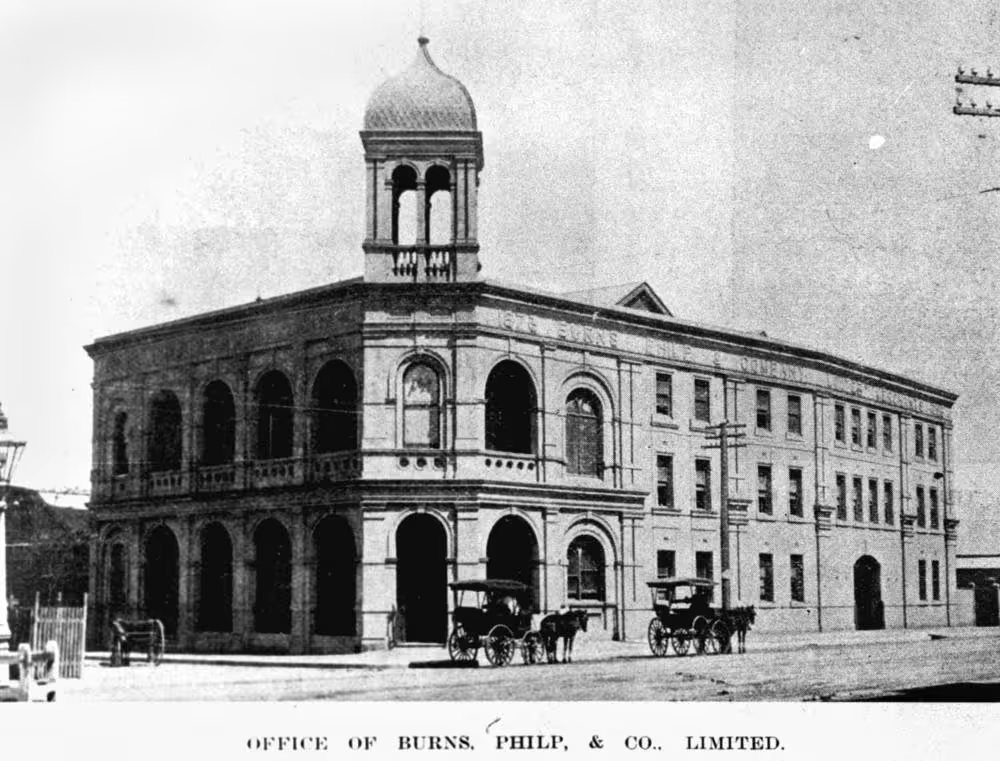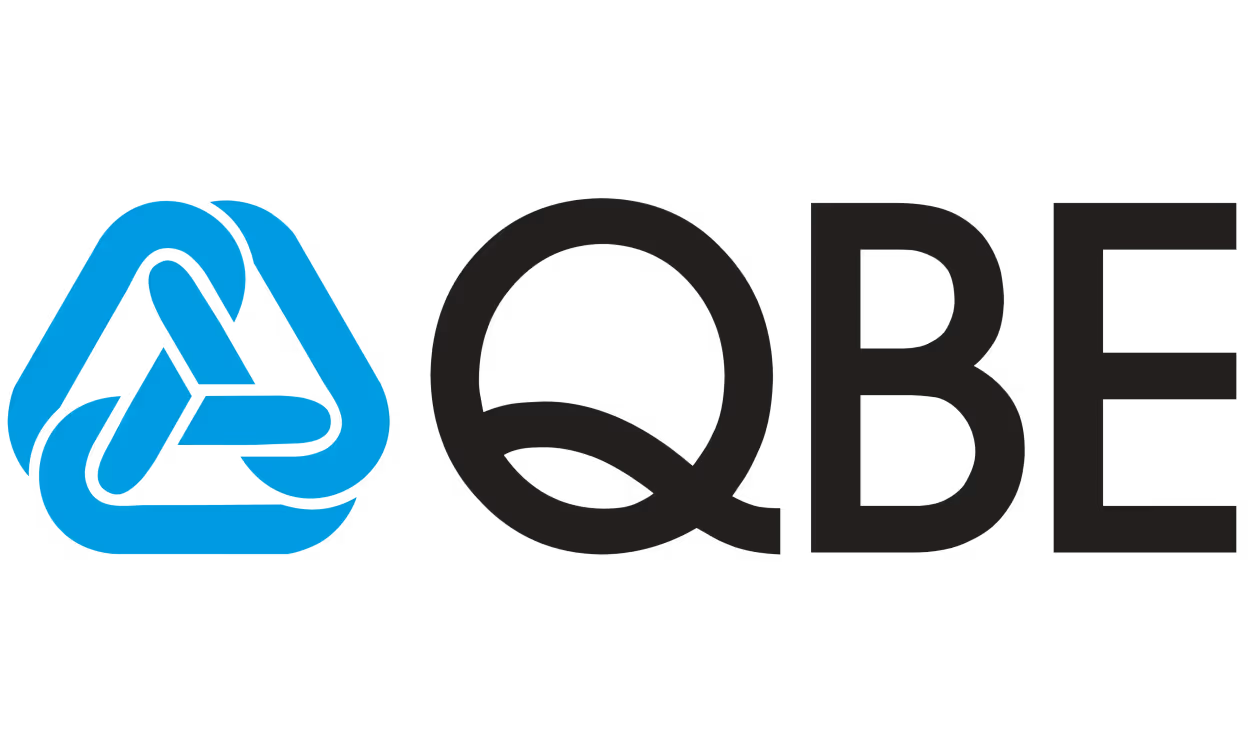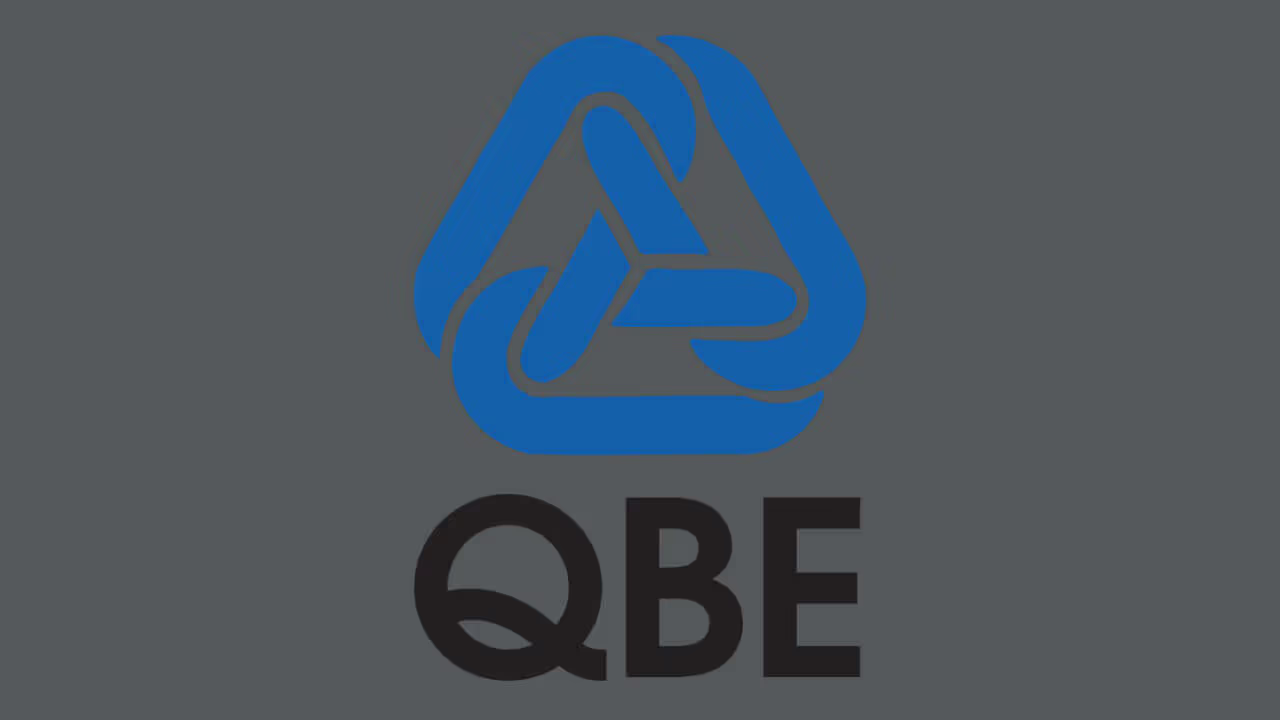QBE offers commercial, personal, and specialty products and risk management solutions as one of the world's leading names in the insurance industry.
From being established in 1886 as North Queensland Insurance Co. to becoming QBE Insurance, the company has come a long way in helping its wide customer base manage risks, build strength and embrace change to its advantage.
2021 Statistics Showing QBE’s Dominant Position In The Insurance Industry
- Revenue of $20.8 billion
- Net profit of $750 million
- Over 11,700 employees in 27 countries
- Share price of $11.35 as of Dec 2021
- Gross Written Premium of $18.5 billion
- 3 divisions worldwide: North America, Australia Pacific, and International
Now let’s dive into the history of QBE Insurance, to uncover exactly what fueled its growth in its remarkable 136-year journey to becoming Australia’s largest global insurer.
The Scottish Origins of QBE In The 19th Century
The roots of QBE Insurance date as far back as 1872, when Scottish immigrant James Burns first moved to Townsville and established his own retail and wholesale business.
James met and hired fellow Scotsman Philp two years later, laying the foundations for a strong partnership in years to come.
The pair decided to transform their partnership into a corporation with the creation of Burns Philp & Company Ltd. with a capital of £150,000 (£19.4 million today after adjusting for inflation) in 1883.

Burns Philp & Company became a major trading force in eastern Australia and began to open branch stores on the Pacific islands in 1886 when it also began to export goods.
The organic growth the company experienced allowed it to venture into new business areas, an example of this being the company backing the founding of the North Queensland Insurance Company that same year.
The new company had its first general meeting at its office at 10 Bridge Street, in Sydney. Operations commenced on 2nd October 1886, with agencies established at Brisbane, Townsville, and Cairns, to name but a few.
Burns and Philp had gotten themselves involved in a business that offered an intangible product, as the insurance industry provided a safeguard against uncertainty in exchange for a monetary contribution as a premium.
In order to function, companies needed a sufficient number of premium payers, and hence Queensland Insurance decided to expand its focus beyond Australia for its customer base.
As part of the decision, the company established more than 35 agencies across the globe, including locations like London, Hong Kong, Singapore, and New Zealand by 1890.
They did so by sending agents to work in these locations and grow the business.
Queensland Insurance Expands In The 20th century
Heading into the 1900s, Queensland Insurance continued its vast expansion, opening its own offices on Fenchurch Street in London in 1904. Another 20 years later, the company opened offices in New York.
In the post-war years, Australia had seen rapid increases in prices paid for its exports, as well as a favorable trade balance and a surge in capital investment in secondary industries.
Such conditions signaled to businessmen that the time was ripe to begin some expansionary activity.

With Queensland Insurance becoming an established name over 30 years into its existence by 1921, on the 3rd of March, Burns founded the Bankers’ and Traders’ Insurance Company (B&T), with Queensland Insurance being the new venture’s largest shareholder.
The intention for forming this new company, as mentioned in its prospectus, was ‘to carry on the business of Fire, Marine and Accident Assurance and all and every other class of Insurance except Assurance on Human Life.’
The Bankers’ was derived from the Royal Bank of Canada-owned Montreal Trust Company, which also had a stake in the venture. This Canadian connection was also a strategic incentive for Burns to form this second insurance company.
The existence of such a second company did allow for certain tactical benefits, such as having the ability to appoint new local directors of influence, and it also gave increased flexibility to shift business and arrange finance between Queensland Insurance and B&T.
New Leadership Takes Over Queensland Insurance Company
1923 was a major year for the Queensland Insurance Company.
The tragic death of one of its founders, Sir James Burns - who lost his battle with cancer on 22nd August, aged 77 - meant the charge of the company was given to his son James. In 1923, James Burns took charge of Queensland Insurance Company.
With the Queensland Insurance Company being one that was expanding overseas, the establishment of the New York branch was followed by the opening of a branch in Montreal in November 1924.
The expansion of the Queensland Insurance business did not come without costs - the company turned over loss rates of 53% and 52.1% respectively, for the years 1924 and 1925.
Despite this, it did manage to maintain its customary dividend rate of 12.5% in 1925.
Getting Through Troubled Times With Sufficient Financing
The collapse of the world economy in 1930 led to a national crisis in Australia, with as many as 70,000 people in New South Wales finding themselves unemployed.
Queensland Insurance Company was not immune to the effects of the crisis, with the annual results in September showing a recorded profit of £62,299 (£4.3 million today after adjusting for inflation), the company’s lowest in 14 years. The loss rate even climbed as high as 62.6%, the highest in over 30 years.
However, despite the bleak outlook these results suggested, the company was in no real trouble. Queensland Insurance had £500,000 (£38.8 million today after adjusting for inflation) backing in the capital, as well as £703,723 (49.1 million today after adjusting for inflation) in visible reserves. This all had been invested in government and public-body securities in Australia, New Zealand, and Canada, among others.
Furthermore, interest and rents that year had allowed for a return of 15.9% on capital, demonstrating the company’s prowess in withstanding testing times.
The Drastic Effects of World War 2 on QBE
With Hitler’s attack on Poland in September 1939, Britain declared that it was at war with Germany, and as a consequence, as was Australia.
A direct consequence of this with regard to Queensland Insurance was an immediate change in marine war risk arrangements.
Despite the uncertainty brought about by the war threat, the success of the British Navy meant that companies like Queensland Insurance won decent returns. Profit for the year was £143,764 (£6.6 million today after adjusting for inflation), with a £37,000 (£ 1.7 million today after adjusting for inflation) increase in net premiums as well.
Braving through the war conditions, Queensland Insurance operations even managed to expand, extending to South Africa and Palestine.
Yet, the war years had taken their toll on Queensland Insurance, as staff had eventually been enlisted for the war, and even the female staff that came to take their place were called up. However, after the war, the company welcomed back almost all of the staff who had left to serve.
Key Takeaway 1: Nothing Extraordinary Happens Without Taking Risks
The first 60 years of Queensland Insurance saw it go through many testing periods. Despite being an up-and-coming company, both Burns senior and junior took risks for the long-term gain of the company.
Establishing a second company in the Bankers’ and Traders’ Insurance Company and opening numerous agencies on a global scale were both risky decisions without which the company could not have had the growth that it did.
The economic crisis in 1930 could have posed a crippling blow to Queensland Insurance. However, thanks to the risks it took in expanding and investing, the company had enough capital in reserve to sustain itself. Such business acumen is what sets it apart from the competition and enabled it to prosper.
Expansion and Reinvention Of QBE Post World War 2
In the beginning of the post-World War 2 era, Queensland Insurance mainly made most of its recent profits from its overseas operations.
However, the business’s roots remained firmly entrenched in Australia.
Decentralization and its impacts on QBE
A policy of decentralization had been passed prior to the war, and as a result, by 1950 Queensland Insurance had 9 non-metropolitan branches as well as 12 non-metropolitan Australian sub-branches.
Following this, the company broadened its focus, as previously it had operated primarily in cities.
This move was particularly important as it showed the company’s forward-thinking approach that propelled it towards growth.
When presented with a policy that could either help or hurt the company, those in charge took initiative, paying attention to the decentralization process so as to not be left behind in their field.
This is evident in the fact that in 1950 the company established full branches in Wagga Wagga and Parkes, which are much smaller cities and towns than Queensland Insurance’s typical base of operations.
Queensland Insurance Overcomes Setbacks
The insurance industry recorded substantial growth in the 1950s, with revenue figures for the insurance business going as high as £58 million (£1.9 billion today after adjusting for inflation)
Queensland Insurance kept pace with the rapid growth in the industry, with net premium income almost tripling since the end of World War 2.
However, testing times were to follow, with a considerable fall in marine insurance revenue in 1953, which became more pronounced with the constraints of Australian import restrictions making their presence felt in the industry.
There were also decreases in the prices of valuable commodities such as jute, cotton, and rubber, which were prominent export products.
In spite of such setbacks, the company produced healthy annual results, thanks to the widespread of its operations. Fire and Accident revenue in Australia progressed steadily, allowing Queensland Insurance to increase its premium income.
The late 1950s brought about further changes that challenged insurance companies.
A growing consciousness challenged companies to keep up with demands for new insurance classes, with ready-made contracts being considered less reliable. The problem was that certain types of insurance were only suitable for specific markets.
This was a challenge for Queensland Insurance, which had an aging leadership accustomed to past practices. At the same time, it was precisely the company’s longevity and long-serving management that had given it the foundation to become the largest Australian-owned general insurance company.
This strength was flexed when, in March 1958, a substantial modern building under the name of Queensland Insurance was opened in Newcastle, which the company used to control a great number of branch offices.
QBE Insurance Is Born
The 1960s brought about abrupt change for Queensland Insurance.
With rising costs and increased salaries, in 1961 a message was sent to all branches, discussing the possibility of reversing their decentralization policy and centralizing routine work in a bureau.
Subsequently, in 1965, it was deemed economically necessary to centralize the decentralized branches in Queensland and New South Wales.
Despite the success decentralization had given to the company in the past, due to the conditions at the time, the company had the foresight to consider whether such a policy was still favorable at that time.
During the same time frame, a major change occurred in the insurance industry dynamic with the introduction of aviation insurance. The Australian Aviation Underwriting Pool (AAUP) launched its business to provide insurance to a fledgling Australian market.
The company we now know as QBE made the smart choice to acquire and make this venture a part of its identity.

Back in 1959, sister companies Queensland Insurance and B&T had each purchased 40% of The Equitable Probate and General Insurance company. Fast-forward to 1973, and the three companies merged, to form QBE Insurance.
The ‘Q’ being taken from Queensland Insurance, ‘B’ from B&T, and ‘E’ from ‘Equitable,’ and so QBE Insurance was born from one of Australia’s largest corporate mergers.
Business Restructuring Towards The End of the 20th Century
The end of the 1970s reflected an extremely difficult period for the company, but by the start of the new decade, QBE began to recover.
To counter a static local market, it looked to expand its overseas operations even more. Furthermore, in another bold move to boost the company, a restructuring was approved, to separate the Australian insurance activities from the international ones. This was done to create a more effective management system, as well as reduce administrative costs.
1985 was a year of expansion, with QBE Insurance’s Hong Kong operations becoming domesticated, as well as a new Macau branch opening.
These, along with increased QBE’s presence in Japan, showed crucial steps had been taken to create a proper international network. The end of the decade marked forward progress, with profit has grown tenfold.
The 1990s began with QBE and Burns Philp ending their century-long partnership, unwinding their cross-shareholdings in each other, with both parties reporting that separation was necessary for future expansion and development. To cement QBE’s international reputation as a mainstay, that decade they produced strong profits across locations like Hong Kong, New Zealand, and Indonesia.
Acquisitions Cement QBE’s Dominance in the 21st Century
Coming into the new millennium, QBE made use of an astute strategy for growth: acquisition.
The company was not shy of flexing its financial muscle to accommodate ventures that it sees can potentially help it grow.
For example, in 2007, QBE acquired Mexican insurer Seguros Cumbre SA de CV, which helped it build a presence in Mexico, as well as General Casualty Insurance in America. In 2011, Balboa Insurance of California also joined the QBE family.
Such strategies saw the company’s profile rocket up in the 21st century, recording a 30-year increase in gross-written premium of $16 billion in 2013.
QBE Embraces Technology and Sustainable Practices
With the rapid advancement of technology as well as the pressing issue of climate change, particularly in the last decade, QBE has had to develop its cyber security capabilities.
Moreover, it has adapted to the changing insurance needs of customers due to the transition of a low-carbon economy.
Furthermore, like countless businesses worldwide, QBE Insurance was hit hard by the Coronavirus pandemic in 2020, which forced it to change its approach to remote working. Policies and practices to support a hybrid workforce were enforced.
Despite the various effects the pandemic had on the company’s business and operations, QBE was able to work through it, working virtually where needed, seeking to recover from the financial hit it took.
Results reflect that the company has managed a turnaround, going from a net loss of $1.5 billion in 2020 to a net profit of $750 million last year.
Key Takeaway 2: Don’t Grow Complacent, Embrace And Adapt To Changes On Time
Moving from the aftermath of World War 2 towards the new century, QBE could not have survived without constant rethinking and reinvention.
The company embraced the decentralization policy, opening full branches in non-metropolitan areas. Later, when this policy began to have negative economic impacts, company leadership decided to reconsider their strategy, adapting to what the conditions required.
Furthermore, they ensured consistent expansion, which was done by acquiring and establishing an international network.
These steps all worked towards the company’s desired international growth. QBE’s decision to react to change rather than sit rigidly in comfort allowed it to become the powerhouse it is today.
What Makes QBE So Successful?
QBE has faced several challenges along its growth journey.
However, the company did not manage to survive all these testing periods through pure luck. It was in fact QBE’s impressive business model and strategy that kept it afloat.
QBE’s Business Model Today
QBE Insurance offers a range of non-life general insurance services for businesses and individuals.
The services include home insurance, workers’ compensation insurance, boat insurance, property insurance, specialty insurance, and commercial packages. It also offers insurance products for accidents and health, marine, motor, and motor casualty.
The company offers claims, underwriting, and both rehabilitation and risk management services too. It markets and distributes its products and services via insurance brokers, agents, phones, and especially in today’s time, the internet.
The company’s revenue primarily comprises premiums charged for providing insurance coverage.
Premiums are categorized into three types:
1) direct, which is paid to the insurer by the policyholder,
2) facultative, which is reinsurance of significant individual risk by a ceding insurer/reinsurer
3) inward reinsurance, which is coverage provided to an insurer/reinsurer in relation to a specified grouping of policies.
Besides this, the company’s sources of revenue include the amounts recovered from reinsurers under the terms of reinsurance contracts, their commission income, and salvage or third-party recoveries.
In 2021, QBE recorded direct/facultative revenue of $15.5 billion, while the amount recovered from reinsurers and reinsurance commission income was $3.6 billion.
QBE’s Business Strategy
In order to keep up with the constantly changing economic landscape of today, QBE Insurance has adopted certain long-term visions and goals.
The company’s official vision is to be the most consistent and innovative risk partner, which in turn will work toward its purpose – to enable a resilient future.
In particular, the company today has spotlighted six strategic priorities to help achieve its vision:
Portfolio Optimization
The first of these is portfolio optimization, under which goals include reducing the volatility of earnings, actively managing for consistency and resilience, and having a consistent framework to identify and monitor the target portfolio.
Sustainable Growth
Next comes sustainable growth, whereby the company seeks to harness the breadth and depth of product knowledge and expertise, as well as to innovate new product offerings and risk solutions to solve customer needs.
Bring the Enterprise Together
QBE also strives to bring the enterprise together, which it will achieve by optimizing its operating model, and leveraging expertise and capability across markets. The company also aims to simplify and remove complexity in its operations.
Modernization of Business
QBE seeks to complete the modernization of foundational systems and processes. This will be achieved by accelerating digital capabilities to make business easier and more convenient for customers and partners.
To this end, automation solutions have been introduced in underwriting and claims areas, while digital channels are available to modernize customer portals.
The People
In terms of its people, QBE wishes to reward and recognize those putting in the work to drive culture and performance, invest in them, and have a strategic workforce plan for the future.
The company has launched an online learning platform to give skills-based training to its potential talent pool.
Company Culture
Lastly, regarding the company’s culture, QBE seeks to live its purpose every day and strengthen collaboration across the enterprise. It has launched an employee listening approach to encourage continuous feedback.
QBE has also strengthened its understanding of its workforce in order to be able to define future workforce needs.
Aside from these primary goals, QBE is focused on achieving greater sustainability, with a net-zero commitment across global operations by 2030. A project to assess how natural catastrophe business is optimized has also been launched.
Doing Right by People and Planet
QBE Insurance, as one of the world’s biggest insurers, bears its responsibility as a role model and leader.
The QBE Foundation, which focuses on creating resilient and inclusive communities by increasing access to resources for marginalized groups and working on solutions to further a low-carbon economy, celebrated its 10th anniversary this year.
The foundation aims to increase understanding of both the physical and financial risks caused by climate change, as well as build the capacity to prepare and respond.

The company also won ‘Green Insurer of the Year’ for its efforts, launched its first syndicated sustainability-linked loan, and progressed towards its $2 billion impact investment target.
Such examples illustrate QBE’s “show, don’t tell” approach towards combatting climate change, as the company has taken the initiative to adapt to a more environmentally-friendly approach.
Further evidence of this is in the fact that although QBE provides services to coal, oil, and gas companies, it ceased offering direct insurance services to thermal coal mines and coal-fired powered stations in 2019.
The company was also Australia’s first to join the UN-convened net-zero AOA, aiming to transition investment portfolios to net-zero by 2050.
As a result of climate change and the consequent need for a low carbon economy, customers’ insurance needs are changing, which QBE recognizes and is adjusting to ensure its customers have an unwavering long-term support.
Key Takeaway 3: Care For People, Contribute To The Communicy, and Collaborate To Grow Sustainably
QBE Insurance would not have been able to get where it is today had it not put the needs of the people and the planet first.
A decision like withdrawing services from mines on the surface may seem contradictory for business, but it was the right decision for the planet.
Without the people, there would be no customers to cater to and hence no company.
Therefore, going beyond the call of duty and giving back to needy communities is as vital as having a concrete business model.
Digital Transformation of QBE Insurance
Digitalization has been a major topic of discussion for financial institutions around the world for several years now.
The COVID-19 pandemic thrust the industry into an unprecedentedly challenging situation and simultaneously, lucrative position.
Being one of the world’s largest insurance companies, naturally, QBE Insurance is seen as one that should be leading the way in this wave of digital transformation.
A Changing World With Changing Risks
Let’s begin with the scenario which was prompting the insurance industry to move towards digitalization even before COVID-19.
Technology has changed how people interact, travel, and work. One product that is highly relevant to the insurance industry is cars. Automobiles are becoming smarter; so much so that driverless cars are gradually becoming a common sight in some countries.
Thus, how insurance companies forecast risks for automobiles also needs to keep pace, leverage the avenues that modern vehicles open, and ensure their policies are aligned with new technology.
On the customer side of things, people are much more tech-savvy and prefer their interactions and dealings to conveniently take place through their smart devices. Here is where companies like QBE need to capitalize on Artificial Intelligence (AI) and Machine Learning (ML) techniques to deliver a superior tech-based insurance experience to customers.
Increased Availability of Data
The amount of data available and the sources it comes from are more abundant and diverse than ever before. From customers’ personal information that is gathered from their smart devices to how their homes and workplaces function via digital controllers, insurance companies can gauge customer risks in a much more accurate manner.
Thus, with such data, not only can QBE improve its claims prediction models and improve its operating efficiency, but it can also develop products that are personalized according to each customer or client company.
Impact of COVID-19
The outbreak of COVID and resulting claims proved that there needs to be better-digitalized channels of communication between customers and insurers.
Simultaneously, customers have varying needs and thus, contracts need to be more flexible or tailored according to each customer’s needs.
Hence, QBE needs to be very diligent in identifying the kinds of digital products and covers its clientele is looking for while trying to find a balance in maintaining its own profitability.
QBE’s Digital Progress So Far
QBE’s response to digital transformation has been decent in recent years, however, there is still much room for growth and improvement.
It has incorporated measures such as embedded automation in underwriting, distribution, and claims operations. It has also begun to focus on data analytics to devise more dynamic plans. QBE is also currently experimenting with AI-based pricing and decision-making networks.
On the other hand, the company has also launched digital learning platforms to aid its employees in keeping at par with rapidly innovating industry requirements.
Key Takeaway 4: Adopt New Technologies When It’s Still Early
Customers, products, and risks are all changing as technology develops. Thus, QBE and other insurance companies simply can’t stick to the way they have always carried out their operations.
Following COVID-19 and the progress in digitalization, it’s high time that QBE speeds up its digitalization plans to keep up with customer expectations and industry standards if it wants to maintain its leadership positions in the insurance sector.
QBE Group Today & Takeaways From Its Impeccable Journey
From its inception in 1886, throughout the turmoil of the World Wars and the rest of the 1900s, and on top of that with the Coronavirus pandemic throwing a wrench into the plans of the business sector, QBE Insurance has for sure been through a lot.
Yet the company has always managed to come out on top and maintained a dominant position in the market.
QBE’s Growth By Numbers
The following table reflects QBE’s growth in the years before COVID. The company underwent significant losses in 2013 yet managed to turn around the situation.
It underwent vital measures such as focusing on fewer countries and reducing its workforce to drive itself back to healthy profits.
Key Strategic Takeaways From QBE’s Journey
Nothing Extraordinary Happens Without Taking Risks
From global crises to world wars, QBE often found itself in a volatile climate for the insurance sector ever since it came into the business.
For this reason, the company never relied solely on its existing operations. Rather, it was always focused on expanding by adding more agencies to its portfolio as well as establishing ventures in different countries.
As a result, during times of economic crisis, the company had sufficient reserves to not only fall back on but also continue to grow its operations.
Don’t Grow Complacent, Embrace And Adapt To Changes On Time
A major reason behind QBE’s worldwide success has been the company’s ability to realize which policies are working and which need to be changed according to the circumstances.
For example, the company was quick to embrace the decentralization policy that allowed it to establish offices in many new areas and significantly expand its reach.
However, when the decentralization strategy was not reaping decent returns for QBE, the management made the smart decision to go back to a centralized structure. From here on, they pursued expansion through acquisition which has, to date, proved very effective in the company’s growth.
Care For People, Contribute To The Communicy, and Collaborate To Grow Sustainably
In recent years, QBE has followed a clear strategy of incorporating all key stakeholders – customers, employees, and the environment included – in its decision-making.
Resultantly, the company hasn’t simply aimed to maximized profits and revenues; rather it has aimed to adapt its strategy according to climate change, the coronavirus, and other serious issues that are relevant to the global economy.
Thus, it has established itself as a business that leads by example and can churn out positive monetary gains even when it prioritizes the environment as a whole.
Adopt New Technologies When It’s Still Early
With technology becoming an integral part of people’s lives, there is an abundance of data that is generated and made available each day. Insurance companies need to leverage these valuable resources to ensure they are producing services that are in line with what customers want along with being effective for the company in terms of risk modeling and cost forecasting.
While QBE has made inroads in recent years, for instance by implementing embedded automation systems, it needs to ensure that it is keeping up with the rapid progress of technology and changing customer needs.
From a small partnership set up by two ambitious businessmen to an insurance company that is globally recognized as a market leader, QBE’s journey to the top has been the result of its dynamic strategies, strong leadership, and forward-looking approach.



